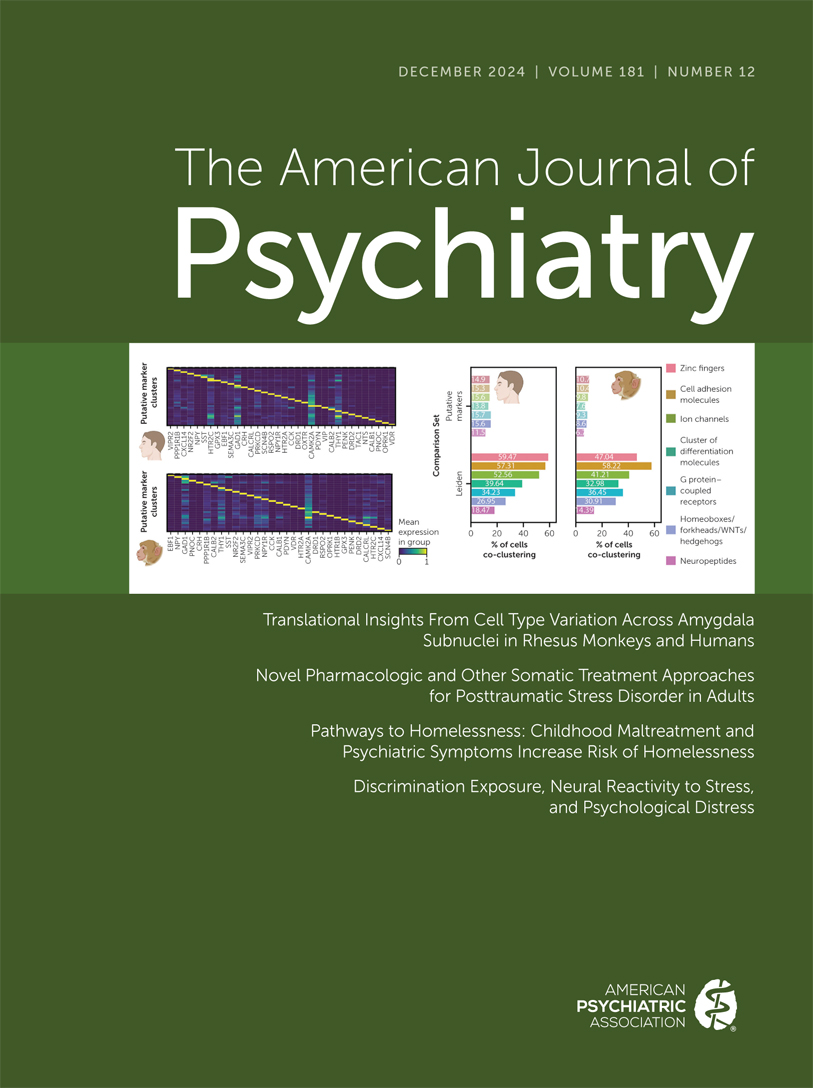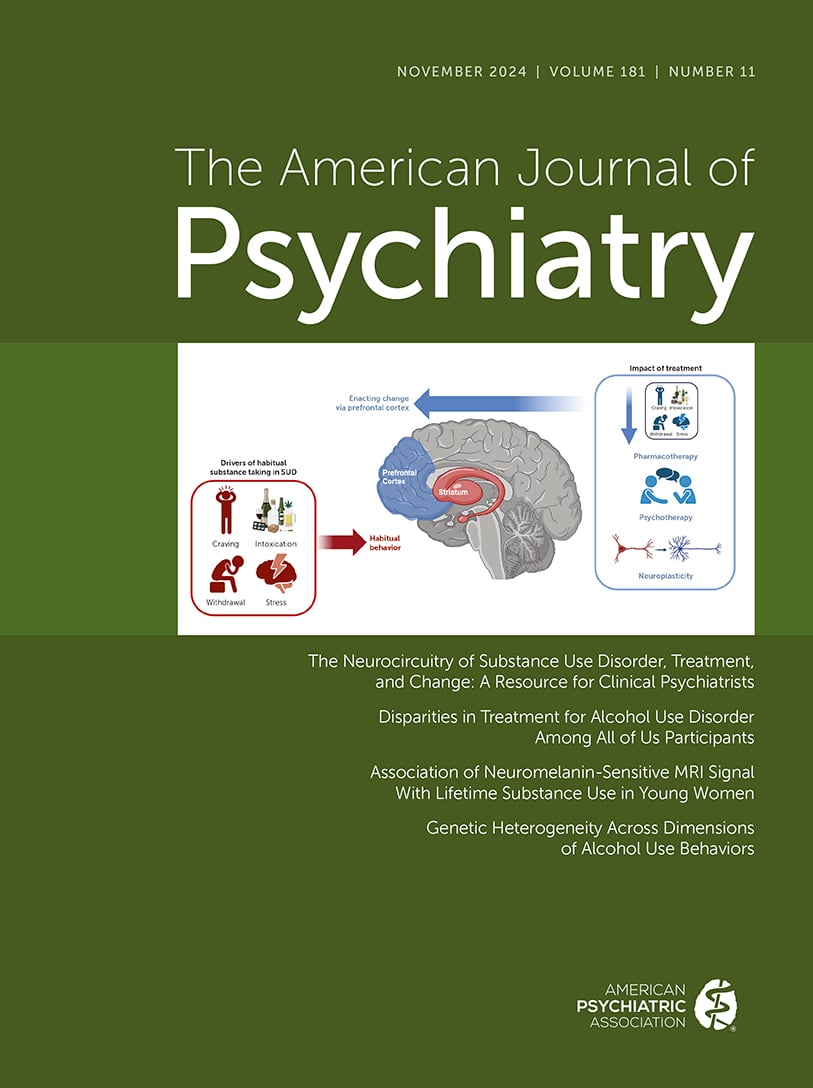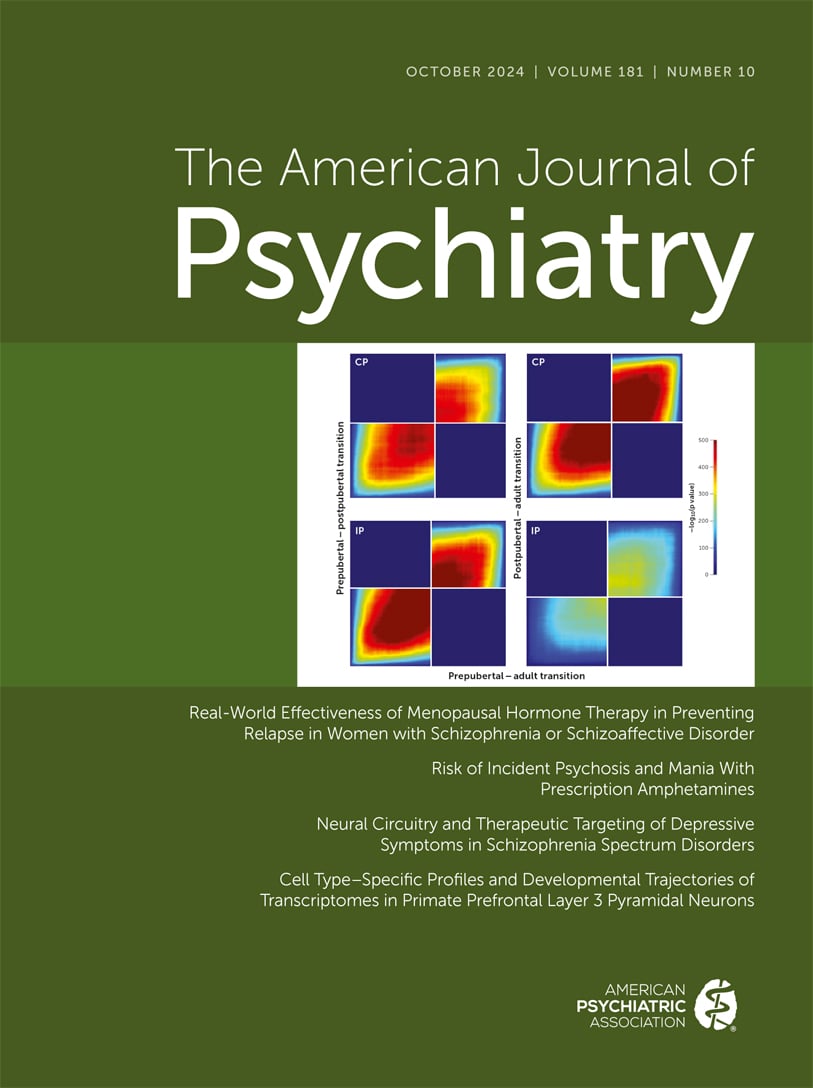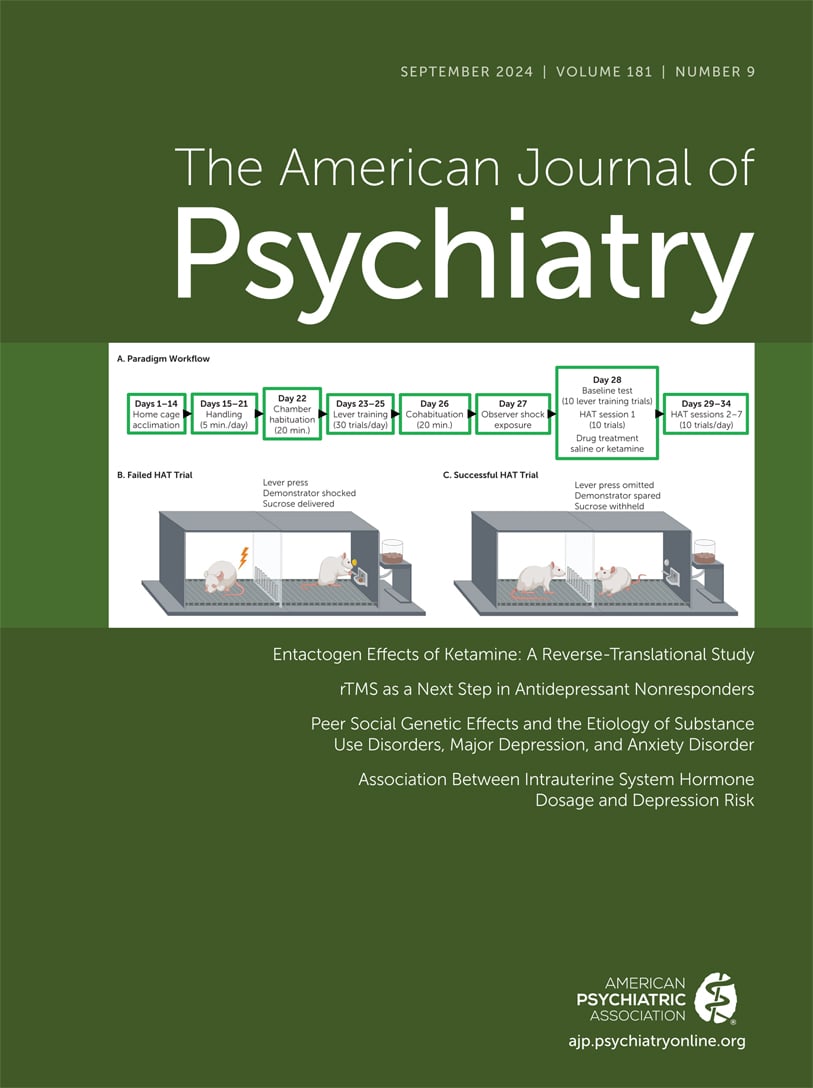American Journal of Psychiatry
- Volume 164
- Number 2
- February 2007
In This Issue
Editorial
Editor’s Note
Special Article
Images in Neuroscience
Reviews and Overviews
Publication date: 01 February 2007
Pages206–214Billions of dollars are spent every year to support medical research, with a substantial percentage coming from charitable foundations. To justify these expenditures, some measure of the return on investment would be useful, particularly one aligned with ...
https://doi.org/10.1176/ajp.2007.164.2.206Introspections
Treatment in Psychiatry
Clinical Case Conference
Images in Psychiatry
Article
Physiologic Reactivity Despite Emotional Resilience Several Years After Direct Exposure to Terrorism
Publication date: 01 February 2007
Pages230–235Objective: Six and a half to 7 years after the 1995 terrorist bombing in Oklahoma City, the authors assessed autonomic reactivity to trauma reminders and psychiatric symptoms in adults who had some degree of direct exposure to the blast. ...
https://doi.org/10.1176/ajp.2007.164.2.230Publication date: 01 February 2007
Pages236–247Objective: Mood-incongruent psychotic features in bipolar disorder may signify a more severe form of the illness and might represent phenotypic manifestations of susceptibility genes shared with schizophrenia. This study attempts to ...
https://doi.org/10.1176/ajp.2007.164.2.236Publication date: 01 February 2007
Pages248–258Objective: The authors carried out a genomewide linkage scan to identify chromosomal regions likely to contain genes that contribute to susceptibility to recurrent early-onset major depressive disorder, the form of the disorder with the ...
https://doi.org/10.1176/ajp.2007.164.2.248Publication date: 01 February 2007
Pages259–264Objective: The authors studied a dense map of single nucleotide polymorphism (SNP) DNA markers on chromosome 15q25-q26 to maximize the informativeness of genetic linkage analyses in a region where they previously reported suggestive evidence ...
https://doi.org/10.1176/ajp.2007.164.2.259Publication date: 01 February 2007
Pages265–272Objective: The purpose of this study was to determine the efficacy of panic-focused psychodynamic psychotherapy relative to applied relaxation training, a credible psychotherapy comparison condition. Des- pite the widespread clinical use of ...
https://doi.org/10.1176/ajp.2007.164.2.265Publication date: 01 February 2007
Pages273–275Objective: The authors assessed whether adding cognitive behavior therapy (CBT) to imipramine for patients with panic disorder decreased the severity of side effects and dropouts from side effects. Method: Data were analyzed ...
https://doi.org/10.1176/ajp.2007.164.2.273Publication date: 01 February 2007
Pages276–282Objective: This study examined psychiatric treatment received by primary care patients with anxiety disorders and compared treatment received from primary care physicians and from psychiatrists. Method: Primary care patients ...
https://doi.org/10.1176/ajp.2007.164.2.276Publication date: 01 February 2007
Pages283–289Objective: Individuals with panic disorder perceive panic attacks as unpredictable. Because predictability is fundamental to Pavlovian conditioning, failure to predict panic attacks could be due to a basic deficit in conditioning. The present ...
https://doi.org/10.1176/ajp.2007.164.2.283Publication date: 01 February 2007
Pages290–300Objective: The authors evaluated the efficacy, safety, and tolerability of extended-release venlafaxine in the treatment of pediatric generalized anxiety disorder. Method: Two randomized, double-blind, placebo-controlled ...
https://doi.org/10.1176/ajp.2007.164.2.290Publication date: 01 February 2007
Pages301–308Objective: Information about the psychiatric histories of adults with anxiety disorders was examined to further inform nosology and etiological/ preventive efforts. Method: The authors used data from a prospective ...
https://doi.org/10.1176/ajp.2007.164.2.301Publication date: 01 February 2007
Pages309–317Objective: Researchers disagree as to whether irritability is a diagnostic indicator for pediatric mania in bipolar disorder. The authors compared the behavioral and psychophysiological correlates of irritability among children with severe mood ...
https://doi.org/10.1176/ajp.2007.164.2.309Publication date: 01 February 2007
Pages318–327Objective: Increased amygdala reactivity during processing of certain types of emotional stimuli (e.g., fear, anger) has been observed in patients with anxiety disorders such as social phobia and posttraumatic stress disorder (PTSD). It is ...
https://doi.org/10.1176/ajp.2007.164.2.318Publication date: 01 February 2007
Pages328–334Objective: The present study was designed to document psychiatric disorders among candidates for weight loss surgery and to examine the relationship of psychopathology to degree of obesity and functional health status. Method: ...
https://doi.org/10.1176/ajp.2007.164.2.328Publication date: 01 February 2007
Pages335–338Objective: Obsessive-compulsive disorder (OCD) is highly heritable. Attempts to delineate precise genetic contributions have met with limited success. There is an ongoing search for intermediate cognitive brain markers (endophenotypes) that may ...
https://doi.org/10.1176/ajp.2007.164.2.335Publication date: 01 February 2007
Pages339–341Objective: Extraversion, a trait associated with individual differences in approach motivation and the experience of positive emotional states, is negatively correlated with certain psychiatric disorders, including depression and social phobia. ...
https://doi.org/10.1176/ajp.2007.164.2.339Publication date: 01 February 2007
Pages342–345Objective: Current practice guidelines discourage use of lithium during breast-feeding, despite limited data. This study aimed to quantify lithium exposure in nursing infants. Method: In 10 mother-infant pairs, the authors ...
https://doi.org/10.1176/ajp.2007.164.2.342Letters to the Editor
Corrections
Letters to the Editor
Book Forum
Books Received
APA Official Actions
Past Issues
View Issues Archive
Vol. 181 | No. 12

Vol. 181 | No. 11

Vol. 181 | No. 10
